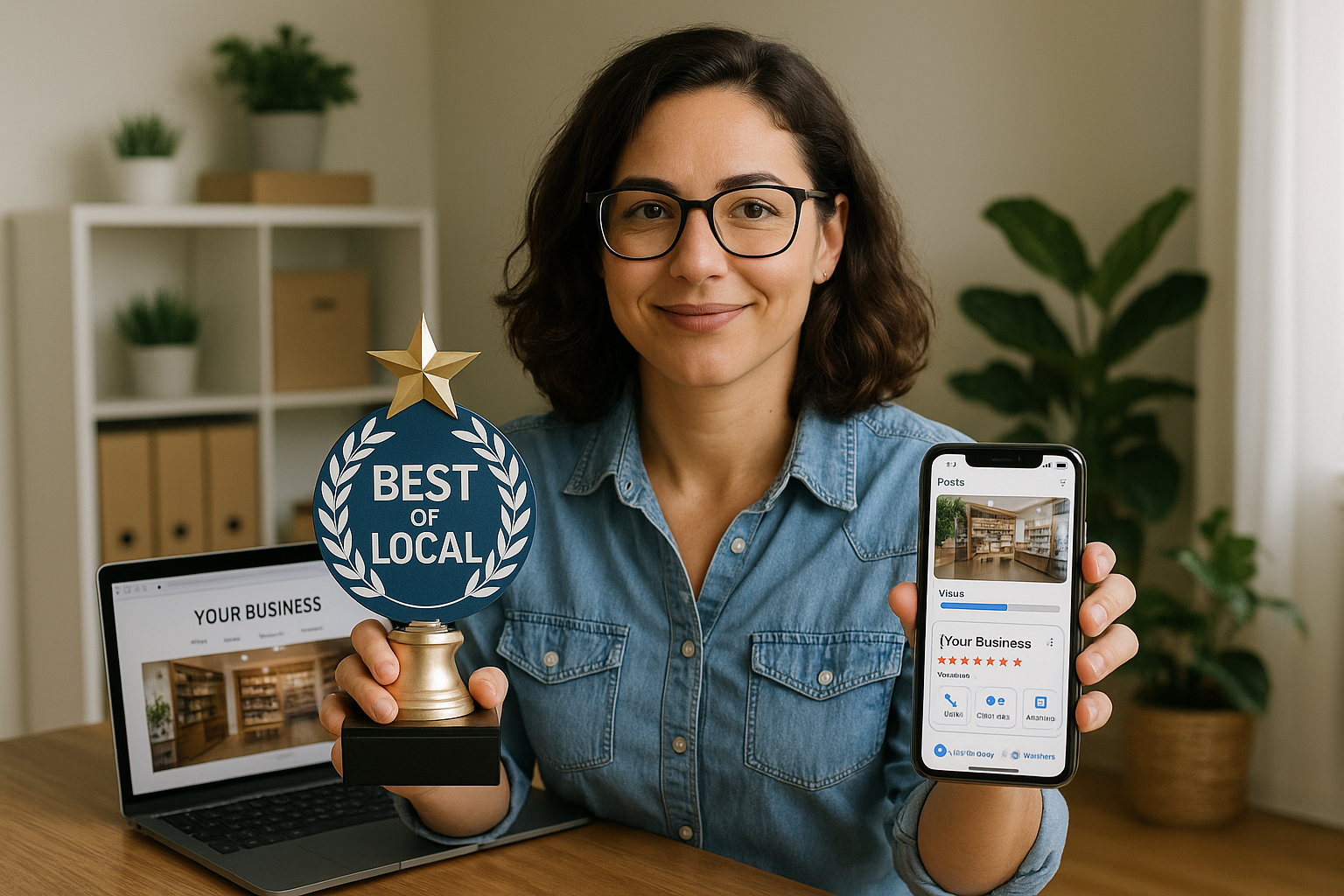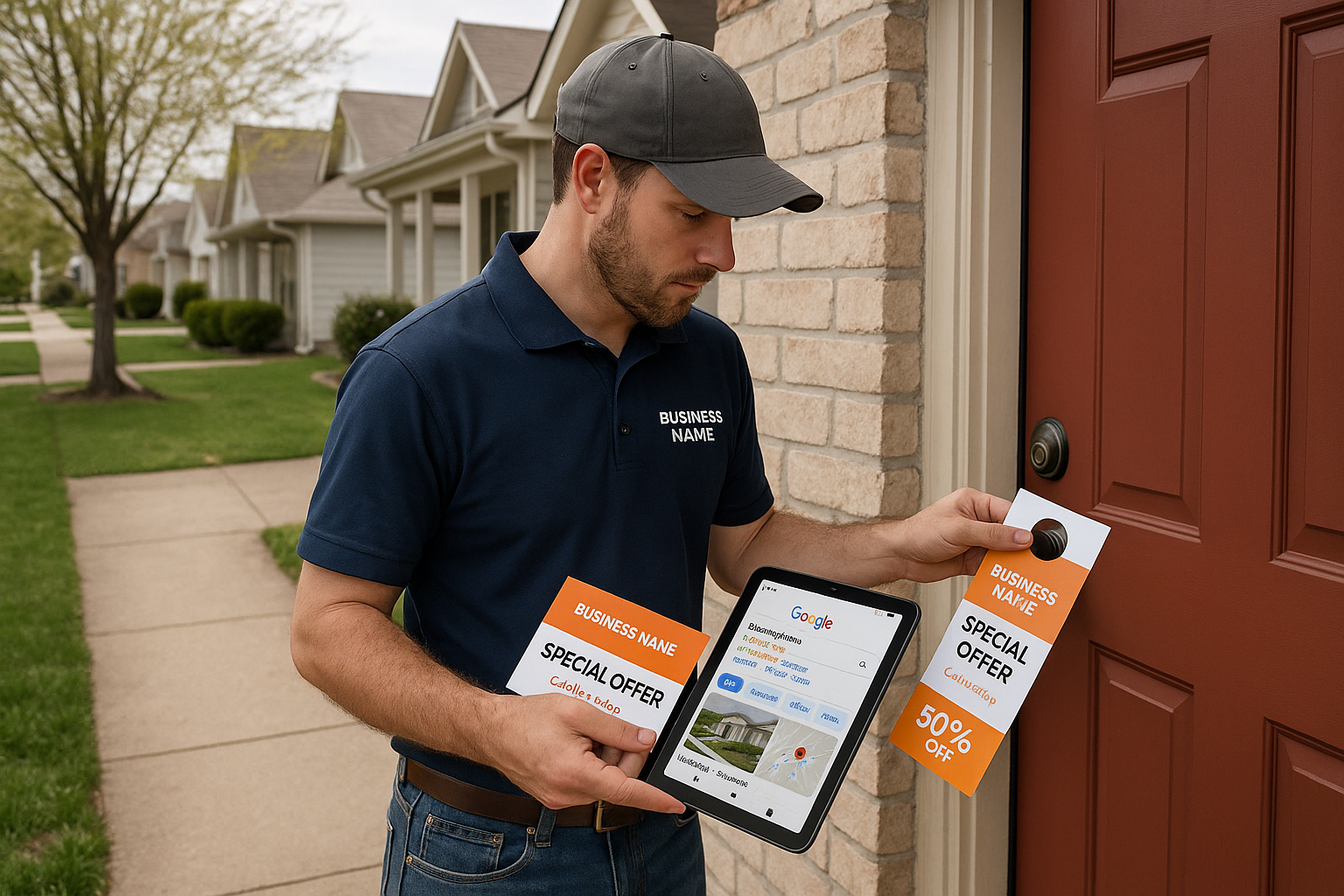You want proof your service works. Your prospects want proof your service works. A customer case study template gives you a repeatable way to turn real wins into content that ranks, earns trust, and sends prospects to your calendar. In this guide I will hand you a field tested customer case study template, show you how to set it up for case study SEO, and give you promotion tactics that actually score backlinks. This is the same playbook we use at Rep Lock Marketing to turn quiet wins into loud revenue.
Why case studies convert
People believe people. That is the entire thesis. A case study is brand storytelling with receipts. You are not claiming you can deliver. You are showing how you delivered for a real customer with real stakes and a clear outcome. Strong customer stories build trust and authority which is exactly what search engines use to sort content that deserves attention. If your story reads like a puff piece, it will be ignored. If it reads like a project postmortem with clarity, it persuades. If you want a deeper look at narrative choices and emotional framing, read our take on brand storytelling. The short version is simple. Tell a true story about a real person, explain the stakes, then show what changed.
Case studies also rank for money keywords. Most service pages chase the same phrases. Your case study adds proof around the same terms while bringing in long tail queries such as service plus city plus result plus timeline. Mix in named tools, problem language, and a recognizable workflow. Now your story answers search intent for buyers who want proof, not theory. It also gives you a high value page that partners and local press feel comfortable linking to. That is good for authority and conversions.
What high performing case studies include
High performing case studies are easy to skim yet rich enough to satisfy a skeptical reader. They have a clear one line outcome near the top, a short context section, a challenge that sounds human, then a breakdown of the approach. The results section uses clear before and after data and a quote that sounds like a human said it. The best studies feel like you are reading a project diary with polish, not a brochure with extra commas.
Visuals keep eyes on the page. Use a hero image that sets context. Add before and after sliders if you have design work, or a short embedded clip if you captured the customer speaking. Short clips do heavy lifting on socials too. Our guide to interactive content shows simple ways to make people stick around. The more time readers spend with your story, the more likely they reach your call to action.
Finally, link your methodology to credible thought pieces and service pages on your site. Internal links send helpful signals to both readers and search engines. Use anchor text that matches intent. Connect your strategy section to articles about links, storytelling, local partnerships, or content formats. When you talk about earning links, send readers to an explainer on how backlinks boost local SEO. When you mention customer narrative arcs, point to brand storytelling. Small connections like these build context and authority.
SEO setup for case studies
Your story deserves a strong technical base. Start with a clean URL slug that includes customer case study template or case study template SEO for this guide. For individual customer studies use a simple slug with the client name and the service. Keep the page in your main sitemap and link it from your All Case Studies hub. Use a unique title tag with your primary service term plus the outcome. Keep your meta description human. Summarize the outcome and the time frame. Think human first, search second.
Use a clear H structure. Your page title is the only H1. Then use H2 for each major section such as TLDR, The Customer, The Challenge, The Approach, Results, and so on. Use H3 for subsections such as metrics, quotes, and visuals. Do not overstuff. Your primary keyword should appear early. Variants such as case study SEO and case study template can appear in natural places. Avoid awkward repetition. Clarity wins.
Schema boosts trust. Add Article schema so search engines understand the page type, author, date published, and topic. Adding FAQ schema near the end can help you show up for voice queries and featured snippets. Include a short Results object in your copy so readers see the improvement at a glance. The technical piece is silent work that pays dividends over time.
Images need care. Use at least one hero image and a simple chart or before after view. Compress images and add descriptive alt text. Use alt text that includes your primary service term and the result in natural language. If you embed a video, use a short caption so scanners understand the point quickly. All of this adds clarity without fluff.
Internal linking is your quiet power move. Link to three to five related pieces of content. Mix service pages and thought pieces. You already saw examples above for links about backlinks, storytelling, and interactive ideas. Add a link about local partnerships with this piece on local sponsorships. Finish with distribution help using reels and short form video. You now have a well connected page that strengthens your topic cluster.
Customer case study template
The template below is built for clarity, proof, and speed. Use it for each client story. Set a consistent length so readers trust the format. Keep the tone human. Clients are people. They face pressure. They make imperfect moves. Tell the truth and your story will work harder than any slogan.
Title
[Customer Name] plus [Service] plus [Result] followed by a short benefit. Example in pattern only, not a mandate. GreenFlow Plumbing with faster job turnaround and a rise in booked calls in a set period. Keep it specific. Skip spin.
One line outcome
Summarize the win in one tight sentence. Use a number only if it reads clean. Explain the change and the time window. Treat this like a trailer. Curiosity should rise. Confusion should drop.
At a glance
Offer a short context paragraph. State the industry, city, service, broad timeframe, and one key KPI change. Keep it to two or three sentences. Readers who skim should get the gist without scrolling.
Customer background
Explain what the customer does, who they serve, and how they deliver today. One short paragraph is enough. Link to their site if you have permission. Paint a simple picture of their day to day reality. Give a specific detail that proves you know them, such as a seasonal rush or a common blocker in that line of work.
The challenge
Speak to the pain in human terms. Explain past attempts. Note what was at risk if nothing changed. Connect the dots between the business problem and the metrics you plan to move. If the customer tried another agency or a DIY fix, say so. Your reader is likely in the same spot. Empathy matters more than puffery.
The approach
Lay out what you did, why you did it, and in what order. Use plain language for tools and tactics. If your angle included content and links, say so. When you talk about narrative, link to brand storytelling. When you discuss link acquisition, cite how backlinks boost local SEO. If you used interactive elements like before after sliders or quick quizzes, point to our piece on interactive content. Keep the sequence simple. Method before magic.
The results
Show the before and the after. Pick a handful of metrics that match the stated challenge. If the problem was lead volume, show booked calls or qualified leads. If the issue was local visibility, show local pack presence or referral traffic from community partners. Include one screenshot of analytics with a clear caption. Mention new backlinks with a nod to referring domains if available. If the story includes revenue, be specific without breaking any confidentiality. Trust rises when numbers connect to the problem you described earlier.
Customer quote
Use a sentence or two from the decision maker. Aim for a specific benefit tied to a number or a time saving. If they sent a paragraph, edit lightly for clarity. Keep their voice. Add their name and role. If possible, add a small photo to increase connection.
Key lessons
Share a few things your reader can do even without hiring you. Recommend a starting audit, a messaging tweak, or a simple on page change that moved the needle fast. Teaching earns trust. You will get credit for the deeper work behind the scenes.
Call to action
Invite readers to talk. Use a clear line that reflects the service featured in the study. Link to your contact or service page. Keep it simple. See how we can do this for your service. Book a consultation.
Optional assets
Add a one page PDF version for teams that circulate material by email. Include embeddable charts for industry blogs. If you used short clips, post them on social channels and embed one here. If you have a partner mentioned in the study, provide a small media kit for them so they can share without extra work.
Promotion that earns links
Great stories deserve distribution. Start by pitching the partners and organizations mentioned in the study. Send a short blurb, a clean image, and a link to your page. Make it easy for them to share. Local partners are often hungry for good news. This is a simple way to add credibility. Our guide to local sponsorships shows how these relationships create authentic mentions.
Create share ready assets. Turn your charts into clean images with labels. Add an embeddable graph for publishers who want to cite your data. Make a before after slider if visuals tell the story best. Interactive elements increase time on page and sharing. See our take on interactive content for practical options that do not require a developer with a magic wand.
Outreach works when your angle is unique. Instead of a generic pitch, send industry blogs a short note with a precise result and a lesson learned. Include a link to your page with a quote block they can paste. Respect their time. If your work improved local visibility, tie the pitch to link equity. This piece on how backlinks boost local SEO explains why case studies attract natural references, especially within a city or niche community.
Do not leave video on the table. Repurpose the best moments into short clips for social channels. A sixty second summary can send a surprising amount of traffic back to the full story. If you want a done for you option, reels and short form video help you multiply reach without adding hours to your week. Add captions and a clear link in your post text so curious viewers can find the full case study.
Examples and outcomes
Let me share a few anonymized snapshots from recent projects. These are not dressed up. These are the kinds of shifts that move a small business forward and make a marketing leader look like a genius at the next meeting.
A regional home service brand struggled with slow booking in shoulder months. Their calls came in spurts then dried up. We rebuilt their service pages to sound like the way customers describe the problem and added a simple before after gallery from recent jobs with a brief caption on each image. We also created a case study that focused on one neighborhood project with community ties. Local references started mentioning the page without being asked. Booked calls rose by roughly one third over the next quarter. The owner stopped asking if marketing was doing anything and started asking if we could roll this to more cities.
An ecom shop with specialty products needed higher quality traffic. They had traffic. It just did not buy. We wrote a case study around a customer who used the product for a very specific use case and tracked the end result. The story was practical, shareable, and short. We cut a few clips into a series for social. That story picked up a link from a niche blog that their buyers love. The search engine boost was nice, but the real change was referral traffic that converted at a far higher rate. The study sits on their site as a permanent qualifier. New visitors read it and think these are our people.
A local professional service firm felt invisible online. They had a great reputation offline. We helped them document a client transformation that involved a community partnership. The study referenced that partner and featured a quote from both sides. The partner pushed it to their email list because it made them look good too. The firm saw a rise in brand search within a few weeks. Their study keeps earning links because local reporters use it as a source whenever they cover that topic. Authority compounds when you act like a helpful source, not a billboard.
Notice the pattern across these. Real problem language. Clear before after shifts. Human context. Content that other sites feel comfortable referencing. That is the difference between a case study that gets skimmed and a case study that gets bookmarked.
FAQ on case study SEO
What is the right length for a case study
Long enough to tell the story without fluff. Most buyers want a quick outcome statement, a short summary of the problem, a few paragraphs on the approach, then the results. If you can say it with clarity in fewer words, do it. If your work was complex, break it into sections and add visuals so people who skim still get the point.
How many metrics should I include
Pick a few that match the business problem. If the goal was booked calls, show booked calls. If the target was revenue, show revenue. Throwing a wall of numbers at people creates doubt. Precision builds trust. Match the metric to the promise you made at the top.
Do I need permission to name the customer
Yes. Always ask. Offer to review the final draft with them. If they prefer anonymity, describe the customer with enough detail to create credibility. Industry, company size, city, or typical job scope can supply context. Do not reveal anything they would regret later.
Do I need fancy graphics
No. A clean chart, a few labeled images, and a short clip can carry the message. If your work has a visual component, a before after slider is gold. If your work is more analytical, a simple chart with a clear caption will do the job.
How do I get links to a case study
Make it helpful. Cite real data. Name partners and give them a ready to share blurb. Pitch niche blogs with a unique angle that fits their readers. Share short clips on social that point back to your story. If your study is useful, links will follow. Our guide on how backlinks boost local SEO breaks this down further.
Next steps with Rep Lock
You now have a customer case study template you can put to work this week. If you would like help turning your wins into traffic and leads, reach out. We can help you write stories people want to read, add the tech that boosts visibility, then repurpose those stories into short clips that travel. If you prefer a done for you approach for social video, tap our reels and short form video service. If you want ideas for interactive widgets that keep people on the page, our guide to interactive content has quick wins you can ship fast. If you need a refresher on authority, back up your outreach with brand storytelling that actually feels human. Stack these together and your case studies will pull their weight.
Copy ready template section prompts
Copy these prompts into your content doc and fill them in for each new case study. Keep the voice consistent across stories so your library feels like a series, not a random pile.
Template prompts
Title prompt. Write a line that includes the customer name, the core service, and the outcome. Keep it specific and short.
One line outcome prompt. Summarize the improvement with a clear change and timeframe. State the benefit in plain language.
Context prompt. State industry, city, service, timeframe, and one key KPI change in one short paragraph.
Customer background prompt. Describe who they serve, how they deliver, and a detail that shows you know their world.
Challenge prompt. Explain the pain points, past attempts, and what was at risk. Use the customer voice.
Approach prompt. List the major steps you took in order, with a short reason for each. Link to support pieces like how backlinks boost local SEO, brand storytelling, and interactive content where relevant.
Results prompt. Present the before and after for a few key metrics. Add a screenshot and a short caption that connects to the problem you opened with.
Quote prompt. Ask the decision maker for a comment about the change and how it affected their day to day. Edit lightly for clarity.
Lessons prompt. Share a few tips that readers can try now.
CTA prompt. Invite the reader to talk and link to your contact page or a service page. Keep it direct.
Asset prompt. Create a one page PDF summary, an embeddable chart, and a short clip. For distribution help, consider reels and short form video.
Outreach and distribution playbook
Think of promotion as part of the work, not an afterthought. Right after publishing, send a thank you note to the customer. Include the link, a short quote block they can use on their site, and a single image. Offer to answer any questions they get from their audience. This tiny step gets many customers to share the study without you asking directly.
Build a short list of local partners or community groups that care about the topic. If your study features a nonprofit, a chamber, or a vendor, they will often share your story. You can take this further by joining a community project and then writing about the impact. Read more about this simple flywheel in our piece on local sponsorships. Trust grows when you show up for real people in your city. Your story gets better too.
Turn your data into small media assets. A clean chart with a simple label, a one paragraph summary, and a headshot of the customer quote turns into a press ready packet. Reporters love ready to use pieces. Make it easy to link back by placing your media assets near the top of the study page with a clear label such as Press kit or Download assets.
Cut your case study into clips. A highlight reel can hit social channels where your buyers hang out. Use captions so your message travels on mute. Link back to the full story in the caption and on your site. If the thought of editing short clips makes you twitch, our reels and short form video service saves your sanity while increasing reach.
Last tip. Add a short FAQ block at the end of your study page. Keep answers tight. Voice search pulls from clean Q and A style content. You do not need a thousand questions. Just answer the ones your buyer will ask out loud.
Author and proof signals
Trust comes from clarity and proof. Add a named author with a brief bio that shows relevant experience. Add a publish date and, when updated, an updated date. Use screenshots to support your claims. If you can, include a short loom style video that walks through the change from the customer point of view. Little touches like these make your story feel credible. They also help case study SEO by signaling experience, expertise, authority, and trust for the humans who matter and the systems that rank pages.
Repurpose for more reach
You already did the hard work. Squeeze more value from the same story. Turn the approach section into a quick checklist for LinkedIn. Expand one tactic into a standalone how to post. Convert your quote into a simple graphic. Record an audio summary for your newsletter. Create a thread that walks through the before and after with images. Link all of these back to the full study. If you want the short clip route without doing the editing, see reels and short form video by our team. The goal is simple. Put your win in more places where your buyers spend time.
A quick word on tone
Say it straight. Cut the fluff. Lose the jargon. If a friend outside your industry cannot follow your case study, you are trying too hard. Replace buzzwords with plain language. Use clear headings and short paragraphs. Your future customers will thank you. Your sales team will thank you. Your search visibility will improve because readers stick around to finish the story rather than bouncing off a wall of vague phrases.
Wrap up
Case studies are the closest thing to a cheat code in content marketing. You get proof for prospects, substance for search engines, and material for partners to share. Use the customer case study template above. Wire up the SEO basics. Promote with intention. Then watch authority rise while your calendar gets busier. If you want help, you know where to find us.





